NIL
Four former UConn players among those involved in NIL suit vs. NCAA that was dismissed
NEW YORK — A federal judge dismissed an antitrust lawsuit Monday that had been brought against the NCAA by several former college basketball players, including Kansas standout Mario Chalmers, after ruling its claims fell outside the four-year statute of limitations. The lawsuit, which included 16 total players who played before June 16, 2016, claimed that […]
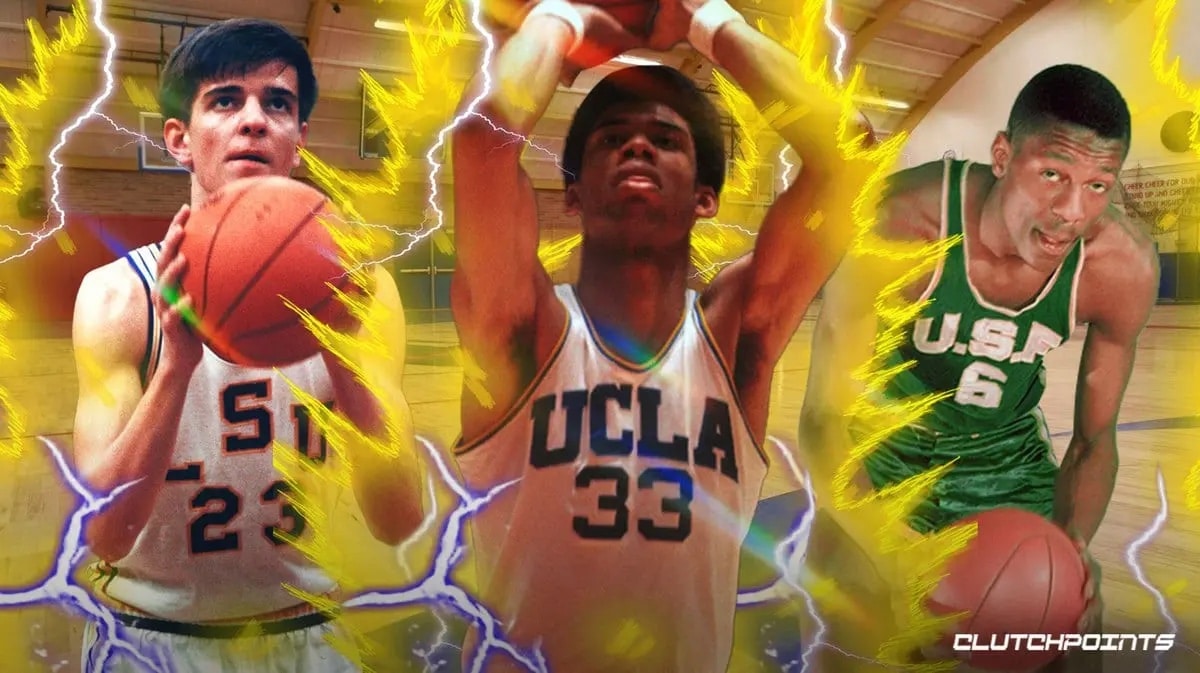
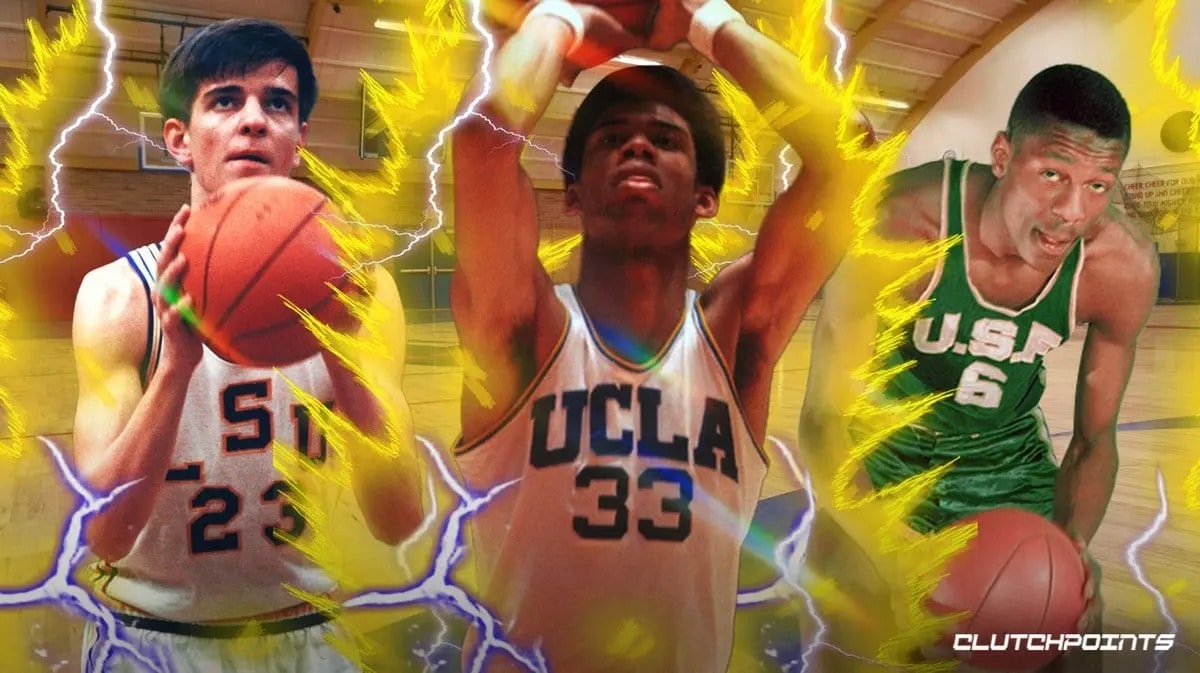
NEW YORK — A federal judge dismissed an antitrust lawsuit Monday that had been brought against the NCAA by several former college basketball players, including Kansas standout Mario Chalmers, after ruling its claims fell outside the four-year statute of limitations.
The lawsuit, which included 16 total players who played before June 16, 2016, claimed that the NCAA had enriched itself by utilizing their names, images and likenesses to promote its men’s basketball tournament. That date in 2016 is the earliest date for players to be included in the House v. NCAA antitrust settlement awaiting final approval from a federal judge.
Among the 16 players involved, three played at UConn: Ryan Boatright (2011-15), DeAndre Daniels (2011-14), Alex Oriakhi (2009-12) and Roscoe Smith (2010-12). All four were part of national championship teams: Oriakhi and Smith in 2011 and Boatright and Daniels in 2014.

U.S. District Judge Paul Engelmayer pointed toward a four-year statute of limitations for federal antitrust violations, despite the lawsuit contending that the law continues to be breached by the NCAA’s use of the players’ NIL in March Madness promotions.
Chalmers famously hit a tying 3-pointer with 2.1 seconds left for Kansas in the 2008 title game against Memphis, a highlight that remains a staple of NCAA Tournament packages. The Jayhawks went on to win the championship in overtime.
“The NCAA’s use today of a NIL acquired decades ago as the fruit of an antitrust violation does not constitute a new overt act restarting the limitations clock,” Engelmayer wrote in the 34-page decision. “Instead, as the NCAA argues, the contemporary use of a NIL reflects performance of an aged agreement: a contract between the student-athlete and the NCAA under which it acquired footage and images of the plaintiff.”
Engelmayer also noted that the plaintiffs were part of the class in O’Bannon v. NCAA, the 2015 case that helped to usher in the age of NIL payments so the lawsuit was not demonstrably different from other settled cases involving the athletes.
Other players involved in the suit included: Sherron Collins, Matt Pressey, A.J. Bramlett, Vincent Council, James Cunningham, Eugene Edgerson, Gerard Coleman, Justin Greene, Ron Giplaye, Jason Stewart and Jason Terry.
Originally Published:
NIL
Happy Hour: Opting in decision with AD Jon Schemmel – Sioux Falls Live
So, the South Dakota Coyotes will now get to pay athletes directly starting July 1, thanks to USD athletic director Jon Schemmel’s June 17 decision to “opt in” to the NCAA-House Settlement, allowing revenue sharing to athletes for the first time. How does it all work? How much money will there be to share with […]
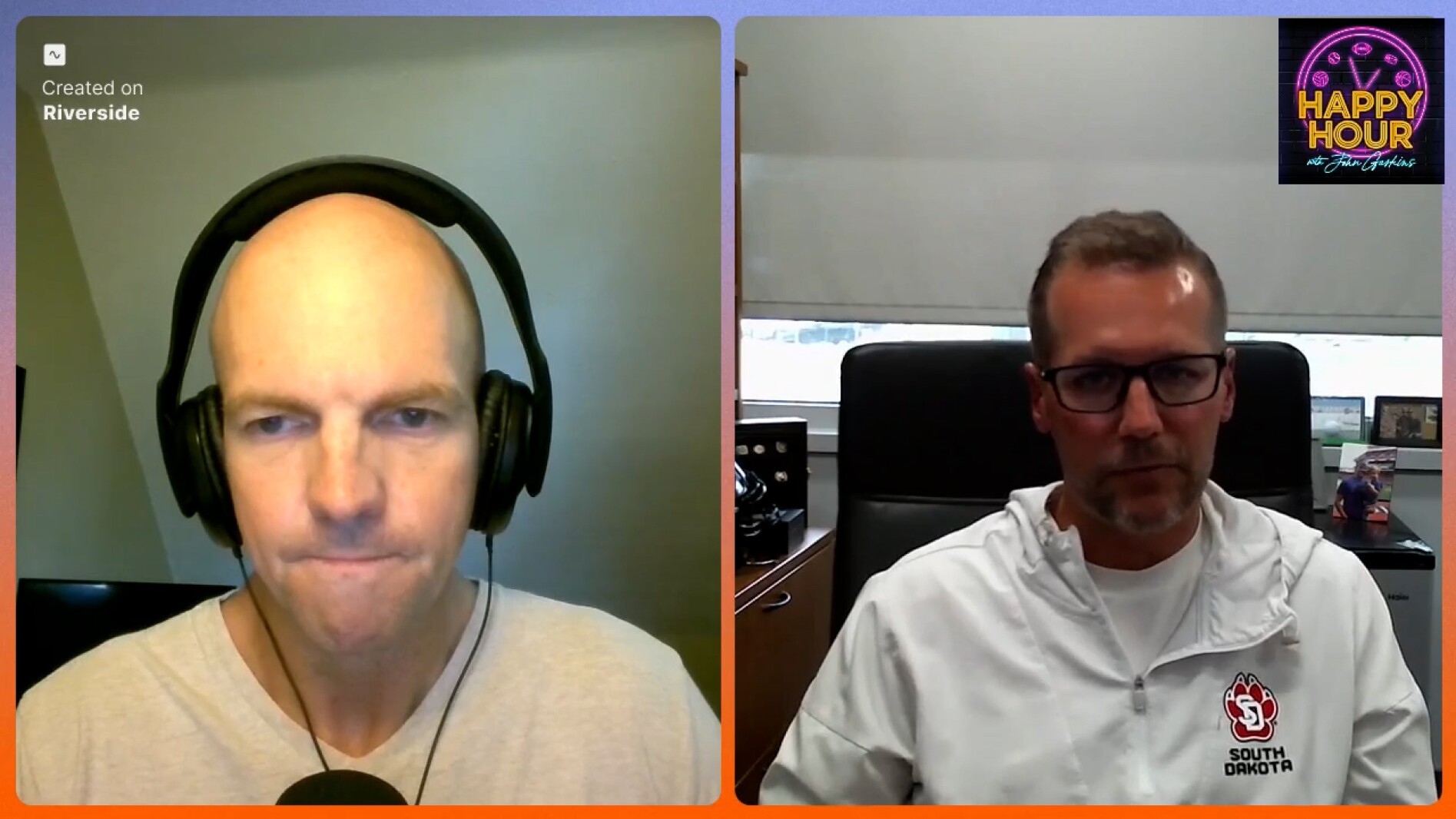
So, the South Dakota Coyotes will now get to pay athletes directly starting July 1, thanks to USD athletic director Jon Schemmel’s June 17 decision to “opt in” to the NCAA-House Settlement, allowing revenue sharing to athletes for the first time.
How does it all work? How much money will there be to share with athletes this year? Which athletes get the money? How much do they get? What does this mean for the major boosters and those who want to contribute more mildly, either to the athletic department or the athletes directly?
Schemmel has the answers in a 73-minute conversation with Happy Hour host John Gaskins. He also addresses the well-publicized shot he took at Sacramento State’s president on social media last week, which leads to a conversation about USD’s desire to stay in the FCS versus the appeal, if any, of trying to move to the FBS like Sac State is attempting (and failing.)
Another major USD issue — attendance. Why does it lag so far behind rival SDSU in football and basketball, and what will it take from Schemmel and others at USD to narrow the gap?
Here is more detail about what you’ll find:
PART 1 – HOW WILL REVENUE SHARING WITH ATHLETES WORK?
Now that the school will be able to share revenue, how will NIL now work for USD athletes who want to make that? What does this mean for USD’s third-party NIL “collective” that was the source to (mostly) keep top athletes or lure in transfers?
How much will it help USD competitively — in recruiting and on the field? Will this stop or limit the transfer portal absurdity the Coyote football team fell victim to in the spring?
And, really, why wouldn’t a school like USD not “opt-in” to sharing revenue with athletes now that they know they won’t to have to make any roster cuts to current athletes? Why was this such a quicker (easier) decision for USD to make than it may be for SDSU and NDSU?
PART 2 – FCS vs FBS, FOOTBALL & BASKETBALL ATTENDANCE, JOHANSEN’S FIRST SIX MONTHS
It was the X (Twitter) shot heard ’round the FCS world last week.
Schemmel fired back at Sacramento State president Kevin Wood, who had publicly called FCS football — where the Hornets reside — “JV” football. When the FBS oversight committee recommended the NCAA to deny SCSU’s entry into the FBS (“varsity”) Schemmel posted something that became hot fodder for FCS enthusiasts:
“All of us JV programs are excited to compete against a varsity program!”
(Since then, the NCAA Div. I council officially denied SCSU’s attempt to enter the FBS on the basis it needed a conference affiliation, which it hasn’t found.)
Schemmel, who has led USD athletics for about 18 months, had no idea the kind of wildfire one public social media sentence would trigger. But he never took down the post and stood his ground in talking about the post in this interview.
This led to a discussion about USD’s desires, or lack thereof, to move from FCS — where the Yotes finished a national semifinalist in 2024 — up to FBS to have a (likely very long) shot of playing in the College Football Playoff and receiving the mother load of money that’d come with it.
Schemmel does not shy away from acknowledging where USD stands in FCS achievement, attendance, interest, and financial strength compared to the Coyotes’ two biggest rivals, and perennial powerhouses, SDSU and NDSU.
Why is there such a gap, and how does USD narrow it, particularly in drawing more fans (and revenue) to the major sports of football and basketball (men’s and women’s)?
Finally, Schemmel gives his assessment of first-year head football coach Travis Johansen’s navigation through spring practice and a transfer portal that plucked away several top players for far more NIL money at FBS schools— also an update on the retired Bob Nielson, who Johansen replaced.
FULL INTERVIEW with USD A.D. Jon Schemmel (Paying athletes, NIL future, FCS vs FBS, game attendance, Travis Johansen so far)
Wed Jun 25 17:03:00 EDT 2025
How does it all work? How much money will there be to share with athletes this year? Which athletes get the money? How much do they get? What does this mean for the major boosters and those who want to contribute more mildly, either to the athletic department or the athletes directly?
Schemmel has the answers in a 73-minute conversation with Happy Hour host John Gaskins. He also addresses the well-publicized shot he took at Sacramento State’s president on social media last week, which leads to a conversation about USD’s desire to stay in the FCS versus the appeal, if any, of trying to move to the FBS like Sac State is attempting (and failing.)
Another major USD issue — attendance. Why does it lag so far behind rival SDSU in football and basketball, and what will it take from Schemmel and others at USD to narrow the gap?
Here is more detail about you’ll find:
PART 1 – HOW WILL REVENUE SHARING WITH ATHLETES WORK?
Now that the school will be able to share revenue, how will NIL now work for USD athletes who want to make that? What does this mean for USD’s third-party NIL “collective” that was the source to (mostly) keep top athletes or lure in transfers?
How much will it help USD competitively — in recruiting and on the field? Will this stop or limit the transfer portal absurdity the Coyote football team fell victim to in the spring?
And, really, why wouldn’t a school like USD not “opt-in” to sharing revenue with athletes now that they know they won’t to have to make any roster cuts to current athletes? Why was this such a quicker (easier) decision for USD to make than it may be for SDSU and NDSU?
PART 2 – FCS vs FBS, FOOTBALL & BASKETBALL ATTENDANCE, JOHANSEN’S FIRST SIX MONTHS
It was the X (Twitter) shot heard ’round the FCS world last week.
Schemmel fired back at Sacramento State president Kevin Wood, who had publicly called FCS football — where the Hornets reside — “JV” football. When the FBS oversight committee recommended the NCAA to deny SCSU’s entry into the FBS (“varsity”) Schemmel posted something that became hot fodder for FCS enthusiasts:
“All of us JV programs are excited to compete against a varsity program!”
(Since then, the NCAA Div. I council officially denied SCSU’s attempt to enter the FBS on the basis it needed a conference affiliation, which it hasn’t found.)
Schemmel, who has led USD athletics for about 18 months, had no idea the kind of wildfire one public social media sentence would trigger. But he never took down the post and stood his ground in talking about the post in this interview.
This led to a discussion about USD’s desires, or lack thereof, to move from FCS — where the Yotes finished a national semifinalist in 2024 — up to FBS to have a (likely very long) shot of playing in the College Football Playoff and receiving the mother load of money that’d come with it.
Schemmel does not shy away from acknowledging where USD stands in FCS achievement, attendance, interest, and financial strength compared to the Coyotes’ two biggest rivals, and perennial powerhouses, SDSU and NDSU.
Why is there such a gap, and how does USD narrow it, particularly in drawing more fans (and revenue) to the major sports of football and basketball (men’s and women’s)?
Finally, Schemmel gives his assessment of first-year head football coach Travis Johansen’s navigation through spring practice and a transfer portal that plucked away several top players for far more NIL money at FBS schools. Also, an update on the retired Bob Nielson, who Johansen replaced.
NIL
Athletes First makes bold move to enhance college football presence
Athletes First already has some of the more renowned players in the NFL, not to mention a top-shelf coaching clientele that includes the likes of Ryan Day and Brian Kelly at the collegiate level as well as Matt LeFleur on the NFL side. Now, the organization is making multiple moves to wade deeper into college […]

Athletes First already has some of the more renowned players in the NFL, not to mention a top-shelf coaching clientele that includes the likes of Ryan Day and Brian Kelly at the collegiate level as well as Matt LeFleur on the NFL side.
Now, the organization is making multiple moves to wade deeper into college football.
Multiple sources tell FootballScoop that Athletes First has hired longtime top Notre Dame personnel executive Dave Peloquin as well as LSU’s Jordan Arcement to bolster their college sports division — specifically the company’s process of identifying potential prep and college players who project to potential top-tier college Name, Image and Likeness clients as well as NFL prospects.
The company has several notable NFL clients, including former Notre Dame All-America safety Kyle Hamilton as well as Dallas Cowboys quarterback Dak Prescott.
In a role that sources told FootballScoop essentially as as the company’s general manager of the collegiate division, Peloquin instantly brings wtih him almost a quarter-century work from his time at Notre Dame — spanning from his student-work as an undergraduate assistant.
Starting in Bob Davie’s Notre Dame Fighting Irish program, Peloquin is one of the rarest individuals in all of college football — his value extending through five full-time Notre Dame football coaches beginning with Davie, transitioning to Ty Willingham, Charlies Weis, Brian Kelly and, finally, in multiple roles for Marcus Freeman.
He was both retained by all those Irish coaches and turned down numerous job opportunities to head up personnel departments for several other Power Conference programs, including in the Big Ten and SEC.
Arcement steadily grew in LSU’s recruiting department since his arrival in Baton Rouge, Louisiana, in 2022, following work at the University of Virginia. Most recently, Arcement was LSU’s director of recruiting communications and external relations. He also has coached in the prep ranks and played collegiate football at Nicholls State (La.).
The moves from Athletes First signal the company’s willingness to try to be on the leading edge of ongoing changes in college athletics, specifically college football.
The House Settlement takes effect July 1, with Power Conference schools who opt in at the maximum amount able to share $20.5 million in revenue with student-athletes — almost overwhelmingly directing the majority of those funds to football players — annually and with built-in increases of 4% annually over the decade-long terms of the deal.
Additionally, NIL opportunities are still available for college athletes and increasingly more so for high school athletes. At the college level, as part of the House Settlement, all NIL deals valued at more than $600 must be ratified by third-party financial powerhouse Deloitte. Athletes First, like other powerful agencies in college and pro athletics, has long history in dealing with marketing arrangements — the types of which Deloitte is being asked to oversee in the House Settlement.
NIL
Did Will Wade, NC State basketball build a winning roster? Here are results from survey
Will Wade, the new head coach, has earned an “A” grade from 81% of surveyed fans for his offseason moves.Texas Tech transfer Darrion Williams is considered the most important addition and a potential ACC Player of the Year candidate.Concern remains about the center position after Paul Mbiya backed out of his commitment.N.C. State basketball will have […]
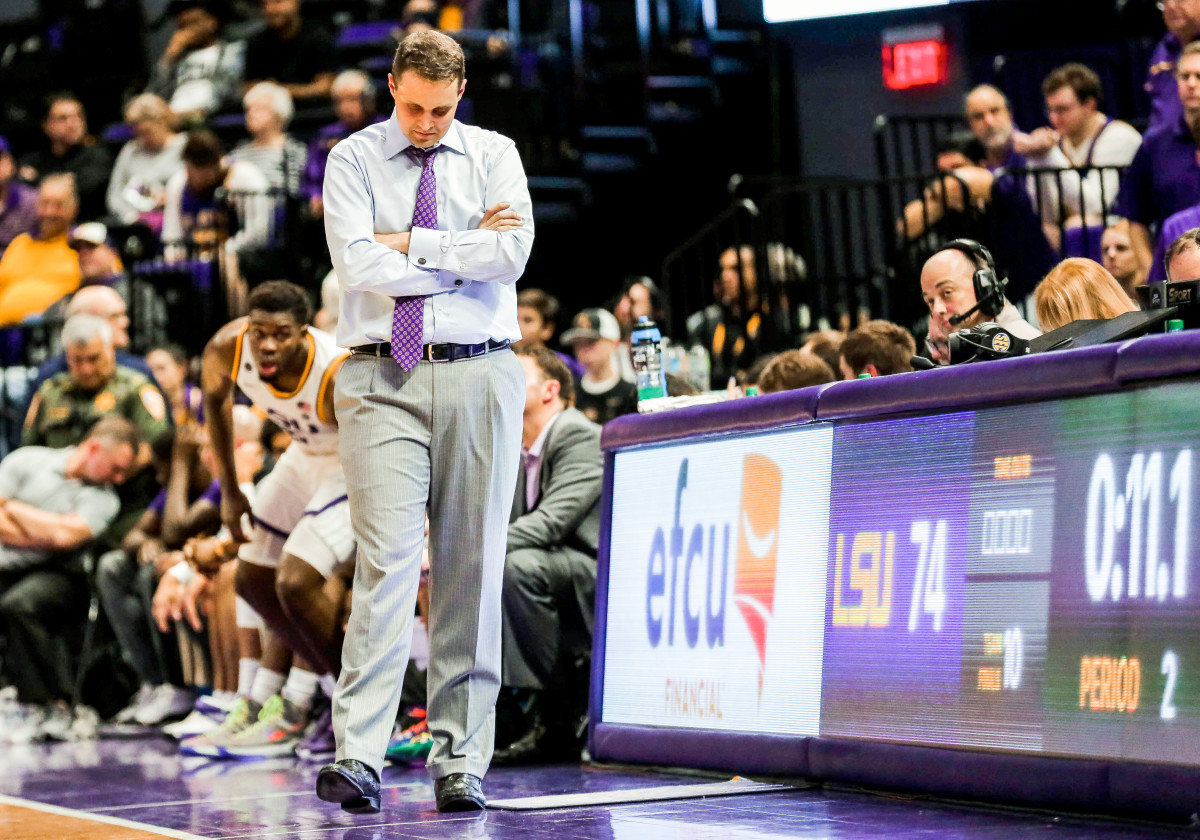
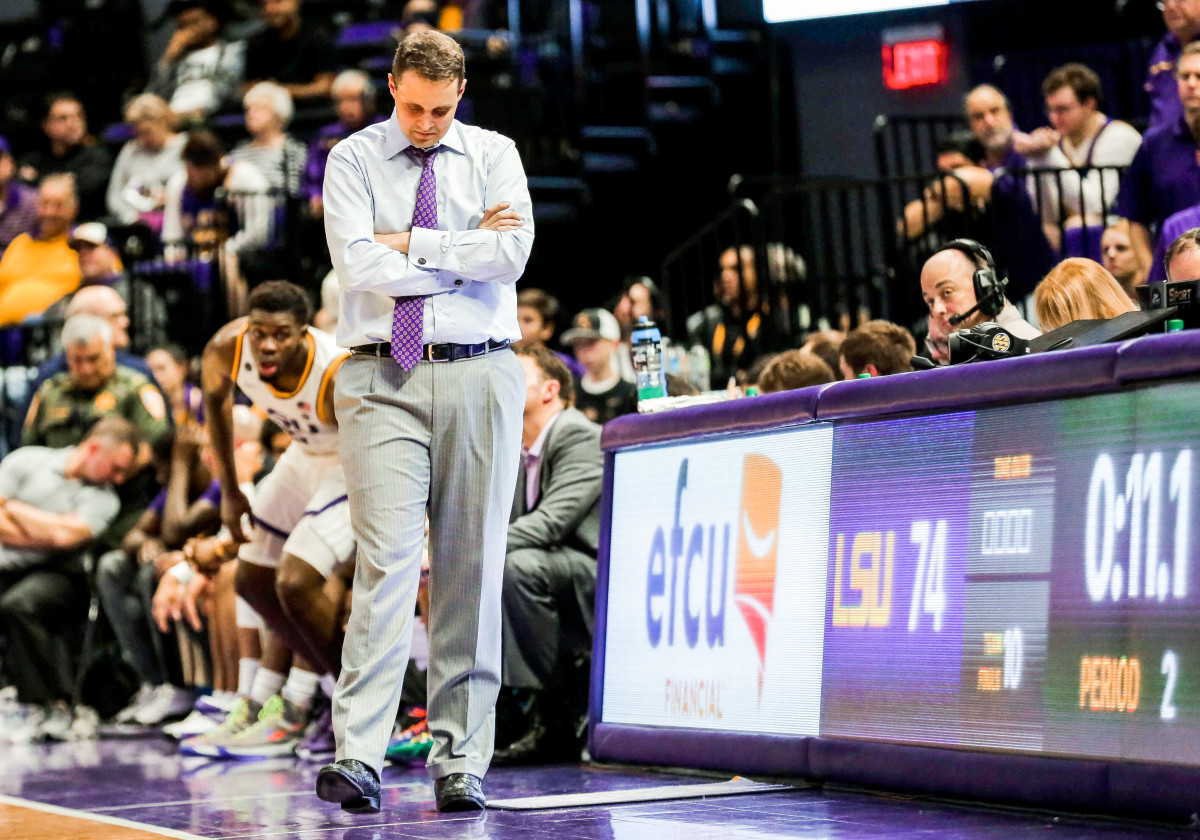
 Will Wade, the new head coach, has earned an “A” grade from 81% of surveyed fans for his offseason moves.Texas Tech transfer Darrion Williams is considered the most important addition and a potential ACC Player of the Year candidate.Concern remains about the center position after Paul Mbiya backed out of his commitment.N.C. State basketball will have a completely different look in the 2025-26 season.
Will Wade, the new head coach, has earned an “A” grade from 81% of surveyed fans for his offseason moves.Texas Tech transfer Darrion Williams is considered the most important addition and a potential ACC Player of the Year candidate.Concern remains about the center position after Paul Mbiya backed out of his commitment.N.C. State basketball will have a completely different look in the 2025-26 season.
The Wolfpack enters its debut season under head coach Will Wade with 12 newcomers, including eight players picked up via the transfer portal. Texas Tech’s Darrion Williams and Michigan State’s Tre Holloman are expected to be two of the top players for the Pack, which also added former UNC forward Ven-Allen Lubin.
N.C. State’s nonconference schedule includes Auburn, Kansas and a trip to Hawaii for the Maui Invitational. Arizona State, Texas, USC and Seton Hall are among the teams competing in that tournament.
Here’s a breakdown of results from a four-question survey that allowed fans a chance to voice their opinion on the Wolfpack’s offseason.
What grade do you give NC State basketball’s offseason?
The Wolfpack received an “A” on their offseason report card, according to 81% of voters in the survey, meaning Will Wade’s makeover for the Pack has received a big-time approval rating. More than 14% of voters gave N.C. State a “B” for the roster reload, which features one of the nation’s top transfer portal classes. ESPN has Wade’s latest additions ranked No. 13 in the country. It appears voters are confident that N.C. State will bounce back as an NCAA Tournament team in Wade’s debut season.
Darrion Williams voted NC State basketball’s most important newcomer
Texas Tech transfer Darrion Williams was one of the top transfer portal pickups this offseason, receiving 71% of the vote as the Wolfpack’s top newcomer. Williams has experienced sensational moments as an NCAA Tournament standout and could be the favorite to win ACC Player of the Year in his first season with the Pack. Freshman guard Matt Able was second with 8% of the vote. Michigan State transfer Tre Holloman and UNC transfer Ven-Allen Lubin also received votes.
Paul Mbiya backing out on Wolfpack gives reason for worry
More than 81% of voters are most worried about what N.C. State will look like at the center position this season. Freshman big man Paul Mbiya was positioned to be the top candidate as the Wolfpack’s primary rim protector this season before backing out of his commitment. Following Mbiya’s decision, N.C. State shifted its attention to former Wyoming center Scottie Ebube, who gives the program a 6-foot-10 center to play alongside undersized post players Ven-Allen Lubin and Jerry Deng.
Tre Holloman, Matt Able get vote of confidence as NC State guards
Looking at N.C. State’s guards, forwards and centers, voters are most confident in the Wolfpack’s group of guards (62%). That group includes Able and Holloman, along with sophomore returner Paul McNeil. Williams, Houston transfer Terrance Arceneaux and McNeese transfer Quadir Copeland are among the Pack’s top options at forward, which received 34% of the vote. Overall, N.C. State has good roster balance and a squad capable of vaulting the program back to the top of the ACC.
Rodd Baxley covers Duke, North Carolina and N.C. State for The Fayetteville Observer as part of the USA TODAY Network. Follow his ACC coverage on X/Twitter or Bluesky: @RoddBaxley. Got questions regarding those teams? Send them to rbaxley@fayobserver.com.
NIL
$1.1 million QB’s NIL agency confirms upcoming event with NFL presence
Before he stepped onto campus in Boulder as a member of the Colorado Buffaloes, class of 2024 quarterback Julian Lewis signed a groundbreaking deal with Athletes First, a sports agency. At the time, a senior at Carrollton (Ga.) High School, Lewis was one of the first athletes in the state of Georgia to be represented […]
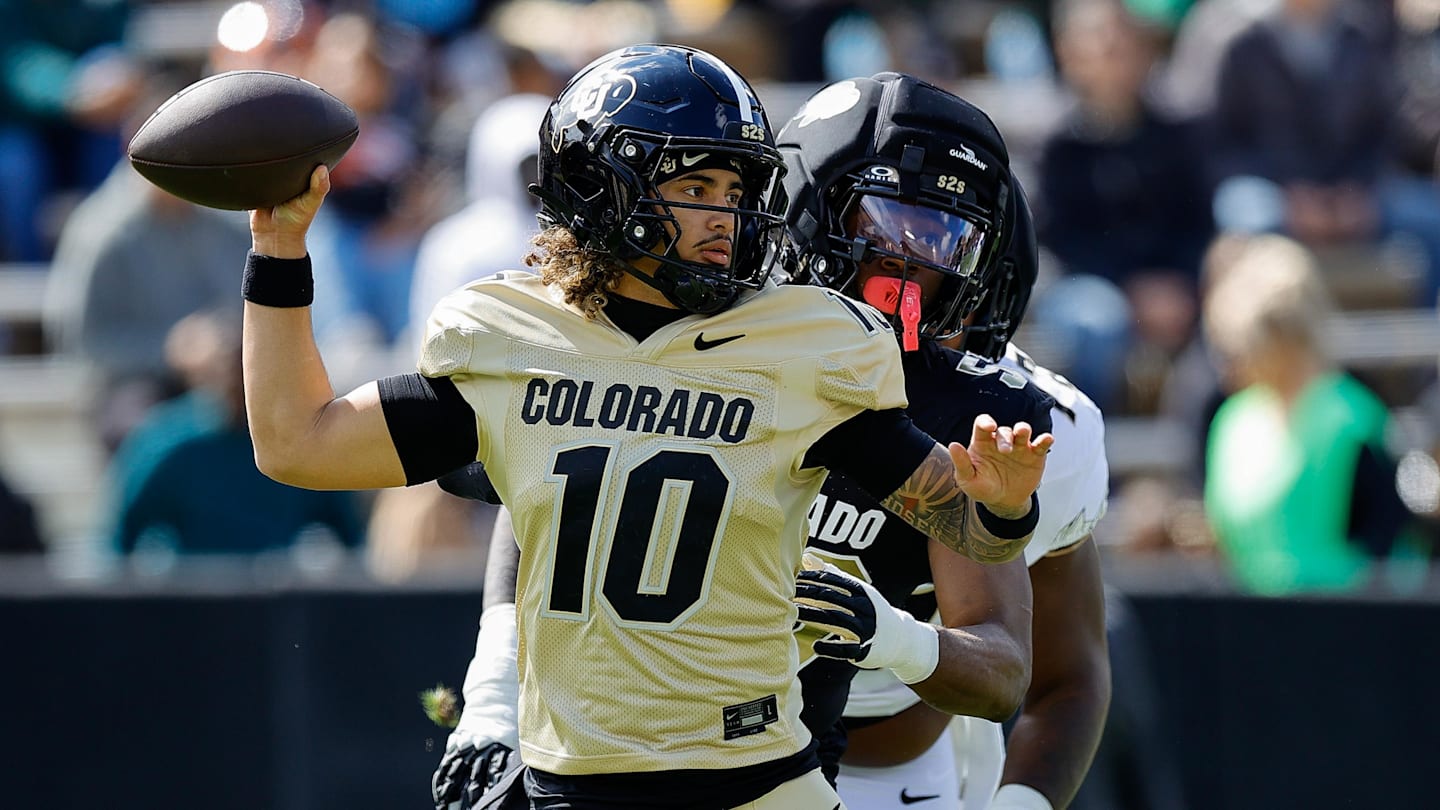
Before he stepped onto campus in Boulder as a member of the Colorado Buffaloes, class of 2024 quarterback Julian Lewis signed a groundbreaking deal with Athletes First, a sports agency.
At the time, a senior at Carrollton (Ga.) High School, Lewis was one of the first athletes in the state of Georgia to be represented by an agency after the Georgia High School Association changed its guidelines to allow high school student-athletes the ability to participate in NIL without losing their eligibility.
The move sent shockwaves through the high school sports landscape. The Los Angeles-based Athletes First agency is highly accredited as they represent a large number of NFL players that include Aaron Rodgers, Justin Herbert, Justin Jefferson and numerous other NFL stars.
Lewis, a five-star prospect and consensually rated as one of the top QB recruits in the 2024 class, was committed to the USC Trojans at the time of his signing.
Fast forward over a year and a half later and he’s competing for the starting job with the Buffaloes as a true freshman. Lauded for his accuracy, poise and arm strength, Lewis is on a favorable path to joining his fellow agency-mates in the NFL.
Speaking to the accredited nature of Athletes First, they began “an exclusive, three-day summit of NFL offensive linemen in Las Vegas spotlighting the strength, personality, and performance of the league’s best players at these positions,” a social media post wrote.
The event, titled “Big & Beautiful presented by BTL,” will be hosted and led by retired eight-time Pro-Bowler Tyron Smith with the help of Detroit Lions offensive tackle Penei Sewell, Dallas Cowboys offensive lineman Tyler Smith and Washington Commanders center Tyler Biadasz.
BTL Aesthetics, the brand presenting the event, will include its services surrounding physical and mental recovery in the Athlete Recovery Lounge.
Lewis already has an NIL valuation of $1.1 million thanks in part to Athletes First — a number that will more than likely grow with time on the field and with the help of an experienced, highly-regarded agency with strong NFL ties.
NIL
College basketball going to 32 regular season games, NCAA Tournament expansion likely – The Daily Hoosier
In the age of revenue sharing, college athletic departments need to find more ways to raise money. More games means more television revenue, and it seems we may be entering the era of more action on the courts and fields throughout the college landscape. One of the first signs of that came Wednesday, when CBS […]

In the age of revenue sharing, college athletic departments need to find more ways to raise money.
More games means more television revenue, and it seems we may be entering the era of more action on the courts and fields throughout the college landscape.
One of the first signs of that came Wednesday, when CBS Sports’ Matt Norlander reported the NCAA is expected to approve an expansion of the college basketball season from 31 to 32 games. Norlander says the move is being done to encourage even more high-profile nonconference games.
The change would go into effect with the 2026-27 season for men and women after the Division I Council passes the measure, per the report.
There has been a 31-game maximum since 2006-07. Teams are permitted to schedule 28 or 29 predetermined games, plus an allowance for multi-team events (MTEs) — such as holiday tournaments — where two or three additional games could be played.
The length of the season (early November to early March) is not expected to change, so more MTEs are likely coming.
According to the report, programs will not be required to play 32 games but will merely have the option to do so.
Norlander speculates in his report that this may just be the beginning of a movement towards a 34 or 35 game regular season over the next 10 years.
The longer seasons become, the less likely it is that any team will match Indiana’s perfect 32-0 season in 1976. That’s especially true if more challenging nonconference games become the norm.
Decision on NCAA Tournament expansion expected soon
The NCAA Tournament is likely to expand as well.
According to a report by ESPN’s Pete Thamel, the decision or whether to expand the NCAA men’s and women’s basketball tournaments for 2026 “is expected to come in the next few weeks.”
Thamel notes that the expansion would be to no more than 76 schools, which would be a maximum increase of eight new teams from the current format. He added that the NCAA remains engaged in talks with its media partners over any potential changes. Like the schedule expansion, the search for additional revenue is a factor. Tournament revenues are allocated back to the schools.
The last expansion to the NCAA Tournament field came in 2011. At that point, the field expanded from 64 teams to 68 teams.
The Daily Hoosier –“Where Indiana fans assemble when they’re not at Assembly”
Related
NIL
Stanford RHP Joey Volchko enters NCAA Transfer Portal with do-not-contact tag
Stanford right-handed pitcher Joey Volchko has entered the NCAA transfer portal with a “do not contact” tag, On3’s Pete Nakos has learned. He played the past two seasons for the Cardinal. Volchko was a preseason second team All-American ahead of the 2025 season and showed flashes of why. He appeared made 15 starts this past […]

Stanford right-handed pitcher Joey Volchko has entered the NCAA transfer portal with a “do not contact” tag, On3’s Pete Nakos has learned. He played the past two seasons for the Cardinal.
Volchko was a preseason second team All-American ahead of the 2025 season and showed flashes of why. He appeared made 15 starts this past year to post a 6.01 ERA with 56 strikeouts to 34 walks across 70.1 innings pitched.
As a freshman, Volchko appeared in 20 games with six starts. He had 53 strikeouts in only 42.2 innings pitched that year as he went 2-1 with a 5.70 ERA.
Prior to Stanford, Volchko played high school baseball at Redwood in Visalia, California. He was a first team member of the 2023 recruiting class according to Baseball America, which also ranked him as the No. 37 overall prospect in the country.
Additionally, Volchko is the No. 15 prospect on Baseball America’s 2026 MLB Draft board. That in mind, he should make a major impact wherever he ends up transferring to.
Stanford is coming off a 27-25 finish this past season and missed out on NCAA Tournament action. The Cardinal now face an uphill battle heading into next season without one of the best pitchers on their roster.
The Transfer Portal for NCAA Baseball
College baseball has two separate windows for players to enter the Transfer Portal. The main window is open now. That’s starting in late May, while the NCAA Tournament is underway, and it remains open for a total of 45 days. The other window that college baseball has is open for 15 days in December.
Unlike sports like football, baseball has unique challenges relating to scholarship distribution that coaches need to manage and could impact players as they transfer. With the house settlement passing, roster sizes are about to shrink.
NCAA Division I baseball teams currently get between 11 and 12 scholarships despite the rosters being more than double that size. It means players receive partial scholarships. That means that coaches need to find a way to balance those scholarships with players already on the roster and who they’re bringing in.
According to On3’s Transfer Portal College Baseball Tracker, 3,179 players have enters the portal so far. The On3 Transfer Portal Instagram account and Twitter account are excellent resources to stay up to date with the latest moves.
-

 Motorsports2 weeks ago
Motorsports2 weeks agoNASCAR Weekend Preview: Autódromo Hermanos Rodríguez
-

 NIL3 weeks ago
NIL3 weeks agoPatrick Mahomes in OKC for WCWS, praises NiJaree Canady and Texas Tech
-

 NIL3 weeks ago
NIL3 weeks agoGreg Sankey fires jab at obstruction rule after controversial WCWS call in Texas vs. Texas Tech
-

 Motorsports2 weeks ago
Motorsports2 weeks agoNASCAR Through the Gears: Denny Hamlin has gas, a border needs crossing, and yes, that’s a Hemi
-

 Health3 weeks ago
Health3 weeks agoBold and unapologetic
-

 Motorsports3 weeks ago
Motorsports3 weeks agoChase Elliott’s $12.6 billion backer made major Kyle Larson decision – Motorsport – Sports
-

 NIL3 weeks ago
NIL3 weeks agoShai Gilgeous
-
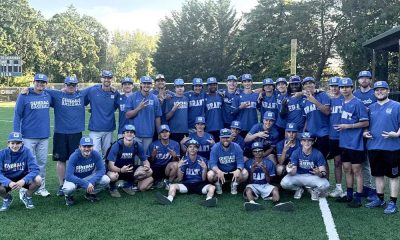
 Sports3 weeks ago
Sports3 weeks agoSummer baseball returns to Marion — and the field where the legendary Nolan Ryan got his …
-

 College Sports3 weeks ago
College Sports3 weeks agoWhat’s next for influencer Livvy Dunne after college gymnastics career? ‘Everything,’ she says
-

 Motorsports3 weeks ago
Motorsports3 weeks agoJudge rules against Michael Jordan’s team in NASCAR lawsuit – NBC Boston



































